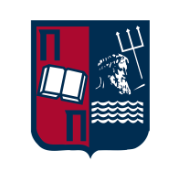Learning Outcomes
Within the framework of the course, students will be able:
- To fully understand the concepts of privacy, territorial privacy, privacy of the person and especially informational privacy
- To realise the privacy threats environment and related requirements
- To understand the concept of privacy framework
- To realise the legal requirements of privacy by design and privacy by default
- To conduct data protection impact assessment surveys for public and private bodies
- To study all privacy issues rised in modern public clouds
- To know critical technological tools for privacy enhancement
- To understand national and European regulations regarding informational privacy protection and personal data protection
- To understand the challenges posed by the evolving dynamics of the combination of the cognitive fields of cyber security, privacy protection, and Artificial Intelligence and the way they create social, cultural, political, and financial issues, as well as ethical issues in modern societies
- To possess state-of-the-art specialized scientific knowledge in the subjects of the course as a basis for original thinking and research activities.
Course Contents
- Privacy: The citizens and public & private bodies viewpoint. Territorial privacy, privacy of the person, informational privacy
- Personally identifiable information PII and personal data
- Threats and privacy requirements
- The privacy paradox
- Legal and regulatory frameworks for personal data protection: The EU GDPR General Data Protection Regulation
- Privacy framework and ISO 29100:2024
- Controls and best practices for privacy protection according to ISO 29151:2017
- Privacy by design and ISO 31700-1: 2023
- Privacy information management system and ISO 27701:2019
- Data protection impact assessment and ISO 29134:2023
- Privacy in public clouds and ISO 27018:2019
- Privacy Enhancing Technologies: Data obfuscation tools (anonymization, pseudonymization, synthetic data, differential privacy, zero knowledge proofs), Encrypted data processing tools (homomorphic encryption, multiparty computation, trusted execution environments), Federated and distributed analytics (federated learning, distributed analytics), Data accountability tools (accountable systems, threshold secret sharing, personal information management systems)
- Privacy protection and AI systems: The Artificial Intelligence Act
Suggested Bibliography
- Acquisti, S. Gritzalis, C. Lambrinoudakis, S. De Capitani di Vimercati (Eds) (2008), Digital Privacy, Theory, Technology and Practices, Auerbach Publications
- Tamo-Larrieux (2018), Designing for Privacy and its Legal Framework: Data Protection by Design and Default for the Internet of Things, Springer
- Bart van der Sloot, A. de Groot, (2018) The Handbook of Privacy Studies, Amsterdam University Press
Scientific Journals
- ACM Transactions on Privacy and Security https://dl.acm.org/journal/tops
- Security and Privacy, J. Wiley and Sons https://onlinelibrary.wiley.com/journal/24756725
- International Journal of Information Security, Springer https://link.springer.com/journal/10207

